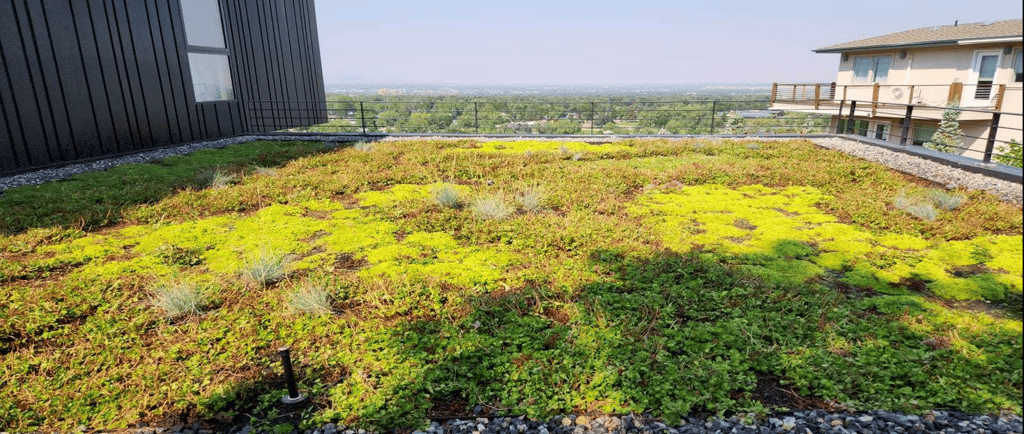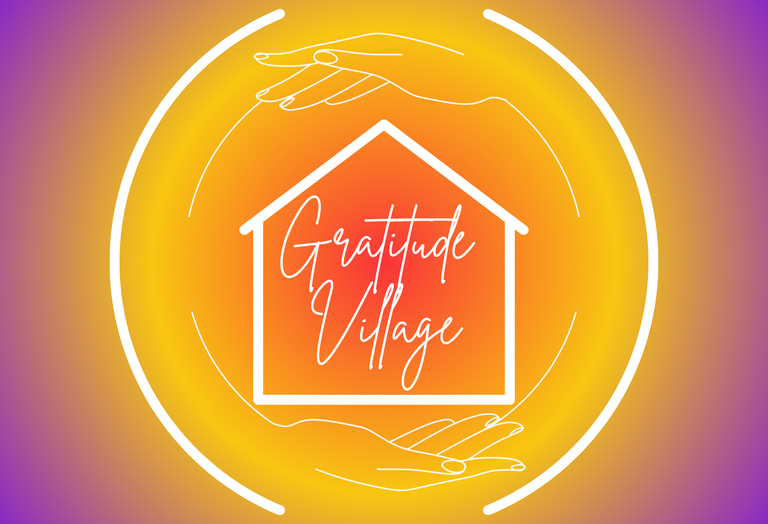Join our next Information Session via Zoom November 18 from 5-6pm MST
The Power of Green Roofs: Sustainable Beauty Above Us
As cities grow denser and concerns about climate change become more urgent, green roofs are emerging as a powerful solution to some of the challenges urban environments face. A green roof, also known as a living roof, is a building's rooftop that is partially or completely covered with vegetation. These innovative spaces not only enhance the beauty of our urban landscapes but also offer a range of environmental, economic, and social benefits. Whether you’re considering incorporating one into a new cohousing development or simply curious about the impact they can make, green roofs represent a step toward a more sustainable future.
Gratitude Village
1/1/20254 min read


The Power of Green Roofs: Sustainable Beauty Above Us
As cities grow denser and concerns about climate change become more urgent, green roofs are emerging as a powerful solution to some of the challenges urban environments face. A green roof, also known as a living roof, is a building's rooftop that is partially or completely covered with vegetation. These innovative spaces not only enhance the beauty of our urban landscapes but also offer a range of environmental, economic, and social benefits. Whether you’re considering incorporating one into a new cohousing development such as Gratitude Village or simply curious about the impact they can make, green roofs represent a step toward a more sustainable future.
1. Environmental Benefits: Cooling the City and Improving Air Quality
One of the most remarkable benefits of green roofs is their ability to mitigate the "urban heat island" effect, where cities become significantly warmer than surrounding rural areas due to heat-absorbing materials like asphalt and concrete. By covering rooftops with plants, green roofs help to absorb heat, lowering surrounding temperatures and cooling both the building and the surrounding area. This cooling effect can reduce the need for air conditioning in nearby buildings, leading to less energy consumption and lower carbon emissions. In addition to temperature regulation, green roofs improve air quality. Plants on rooftops can absorb pollutants from the air, such as carbon dioxide and particulate matter, and release clean oxygen in return. This creates healthier, fresher air, especially in urban centers where pollution is a growing concern.
2. Stormwater Management: Controlling Runoff and Preventing Floods
Green roofs are particularly effective at managing stormwater, which is crucial for cities that experience heavy rainfall and potential flooding. Instead of rainwater running off rooftops and overwhelming sewer systems, green roofs absorb and filter stormwater through layers of vegetation and soil. This helps reduce the risk of flooding by slowing down water runoff, allowing it to be naturally absorbed and filtered before it reaches the ground. The ability of green roofs to retain water also means that less stormwater enters public drainage systems, which can prevent the erosion of nearby landscapes and reduce the strain on municipal water systems. In this way, green roofs act as a natural sponge, turning a potential problem into a sustainable solution.
3. Biodiversity: Creating Urban Green Spaces for Wildlife
In densely built environments, green roofs offer a valuable opportunity to reintroduce nature into cities. These rooftops can serve as habitats for a variety of plant species, insects, and even birds, creating a miniature ecosystem high above the streets. By supporting native plants and providing a refuge for pollinators like bees and butterflies, green roofs help sustain biodiversity in urban areas. For city dwellers, green roofs also bring the beauty of nature closer to home. In a world where access to green spaces is often limited, living roofs can provide a serene, natural space for relaxation, gardening, or simply enjoying the view. In cohousing communities, for example, these rooftops can offer communal gardens or seating areas, creating opportunities for residents to come together and connect with nature.
4. Energy Efficiency: Saving Costs and Reducing Carbon Footprints
Green roofs are not only beneficial for the environment—they also make economic sense. By insulating buildings, they help reduce heating and cooling costs throughout the year. In the summer, the vegetation acts as a buffer that keeps buildings cooler, while in the winter, the added insulation can reduce heat loss. This energy efficiency can lead to significant cost savings on utility bills. Furthermore, because green roofs protect roofing materials from direct sunlight and harsh weather conditions, they extend the lifespan of the roof itself, reducing the need for repairs or replacements. In the long term, this can lead to substantial savings for building owners and reduce the amount of construction waste that ends up in landfills.
5. Aesthetic and Psychological Benefits: Enhancing Well-Being
The presence of greenery in urban environments has been shown to improve mental well-being and reduce stress. Green roofs can transform drab, concrete rooftops into vibrant, natural spaces that improve the overall aesthetic of a neighborhood. Whether visible from nearby buildings or enjoyed directly by residents, green roofs bring beauty to the skyline and help soften the industrial appearance of cityscapes. For those lucky enough to live or work near a green roof, the opportunity to be surrounded by greenery can promote a sense of tranquility and connection to nature, even in the heart of a busy city. This can lead to improved mental health, increased productivity, and overall happiness.
6. Supporting Sustainable Architecture
As part of the growing movement toward sustainable architecture, green roofs are an essential component of energy-efficient, eco-friendly building design. They align with certifications like LEED (Leadership in Energy and Environmental Design), which rewards buildings for their sustainable features. In cohousing developments, for instance, green roofs contribute to a collective vision of sustainability, helping to lower the community’s overall environmental impact while fostering shared spaces that enhance community life.
Conclusion: Green Roofs as the Future of Sustainable Cities
Green roofs are more than just a trend—they are a vital solution to the environmental, social, and economic challenges faced by our cities. By incorporating greenery into urban design, we can create healthier, more sustainable environments for people and wildlife alike. Whether through reducing energy use, managing stormwater, supporting biodiversity, or simply providing beautiful spaces for people to enjoy, green roofs have the potential to transform our cities into greener, more livable places.
As the world moves toward more sustainable living, green roofs represent an exciting opportunity to build a future where nature and urban life can coexist in harmony, benefiting not just the buildings they top but entire communities. This is the future we envision at Gratitude Village where our goal is to incorporate green roofs on several of our community buildings.
Photo copyright: Green Roofs of Colorado
COMMUNITY
Join us in embracing nature, diversity and connection.
Sustainability
DIVERSITY
info@gratitudevillageco.com
720-689-4821
© 2025. All rights reserved.
AFFORDABILITY
Gratitude Village Inc. is a 501(c)3 charitable corporation that values diversity, equity, and inclusion as essential to our mission
Subscribe to our Substack
Refund Policy




Gratitude Village is a Proud Member of these organizations
